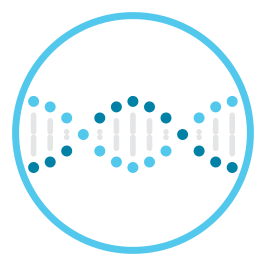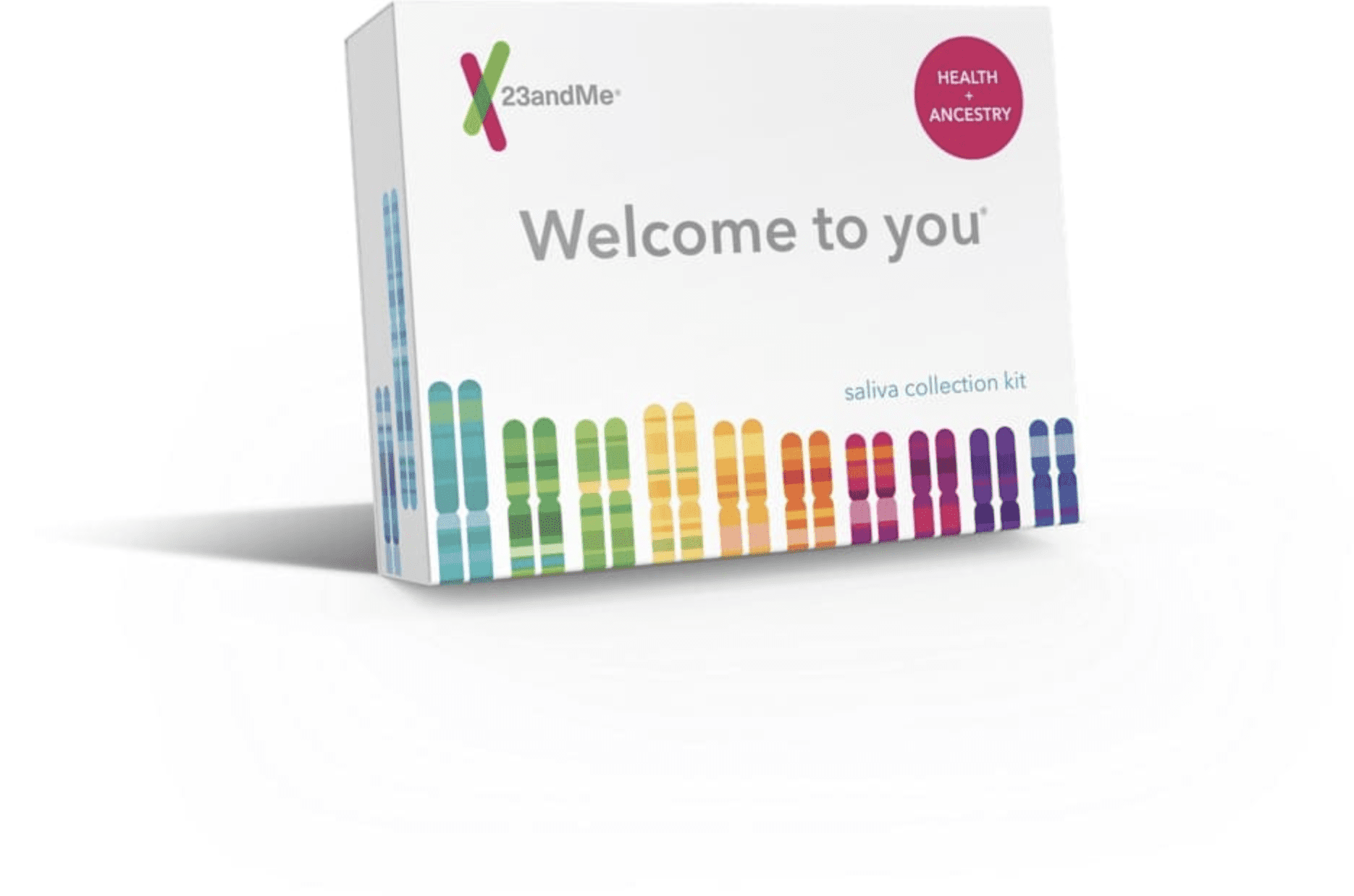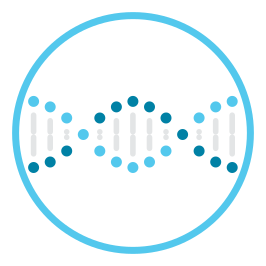Explore AMD and what your DNA can tell you
Types of AMD
There are two types of age-related macular degeneration: dry and wet. Dry AMD is caused by the buildup of yellow fatty deposits beneath the retina called “drusen.” Dry AMD is associated with vision loss that worsens slowly over time. This type of AMD accounts for about 90% of all AMD cases. The remaining 10% of cases are wet AMD, which involves the growth of abnormal blood vessels underneath the macula. When these vessels leak blood and fluid, it damages the macula and makes central vision appear blurry, resulting in severe vision loss that can worsen rapidly.

Is AMD risk influenced by genetics?
Yes – AMD is associated with variants in many genes. Two of these genes are called CFH and ARMS2.
Other factors that may cause an increased likelihood of AMD
In addition to age, other factors that can increase the risk of AMD include smoking and having a family history. Ethnicity may also be a factor: people of European descent are more likely to develop AMD than people of African, Hispanic, or Asian descent. In contrast, eating a healthy diet has been associated with a reduced risk of developing AMD. Consult with a healthcare professional before making any major lifestyle changes.
AMD affects many people
It’s estimated that more than 10 million people in the U.S. have some form of age-related macular degeneration.
Find out if your genetics might increase your likelihood of developing AMD
If you want to learn how your genetics may influence your risk for AMD, 23andMe can help. The Age-Related Macular Degeneration Genetic Health Risk report* can tell you whether you may have an increased risk of developing age-related macular degeneration based on your genetics. The report includes the two most common variants associated with an increased risk of developing the condition. The Age-Related Macular Degeneration Genetic Health Risk report is provided in the 23andMe Health + Ancestry Service.

Health + Ancestry Service
*The 23andMe PGS test uses qualitative genotyping to detect select clinically relevant variants in the genomic DNA of adults from saliva for the purpose of reporting and interpreting genetic health risks. It is not intended to diagnose any disease. Your ethnicity may affect the relevance of each report and how your genetic health risk results are interpreted. Each genetic health risk report describes if a person has variants associated with a higher risk of developing a disease, but does not describe a person’s overall risk of developing the disease. The test is not intended to tell you anything about your current state of health, or to be used to make medical decisions, including whether or not you should take a medication, how much of a medication you should take, or determine any treatment. The Age-Related Macular Degeneration (AMD) genetic health risk report is indicated for reporting of the Y402H variant in the CFH gene, and the A69S in the ARMS2 gene and describes if a person has variants associated with an increased risk of developing AMD. The variants included in this report are common in many ethnicities, but are best studied in people of European descent.
References
“Age-Related Macular Degeneration: Facts & Figures.” BrightFocus Foundation. Retrieved March 6, 2019, from https://www.brightfocus.org/macular/article/age-related-macular-facts-figures.
Cleveland Clinic. (2019). “Age-Related Macular Degeneration”. Retrieved February 19, 2019, from https://my.clevelandclinic.org/health/diseases/15246-age-related-macular-degeneration.
Hageman et al. (2008). Age-Related Macular Degeneration (AMD).
National Institute of Health. “Age-Related Macular Degeneration (AMD)”. National Eye Institute. Retrieved October 29, 2020, from https://www.nei.nih.gov/learn-about-eye-health/eye-conditions-and-diseases/age-related-macular-degeneration.
U.S. National Library of Medicine. (2020). “Age-related macular degeneration.” MedlinePlus.

Leave a Reply